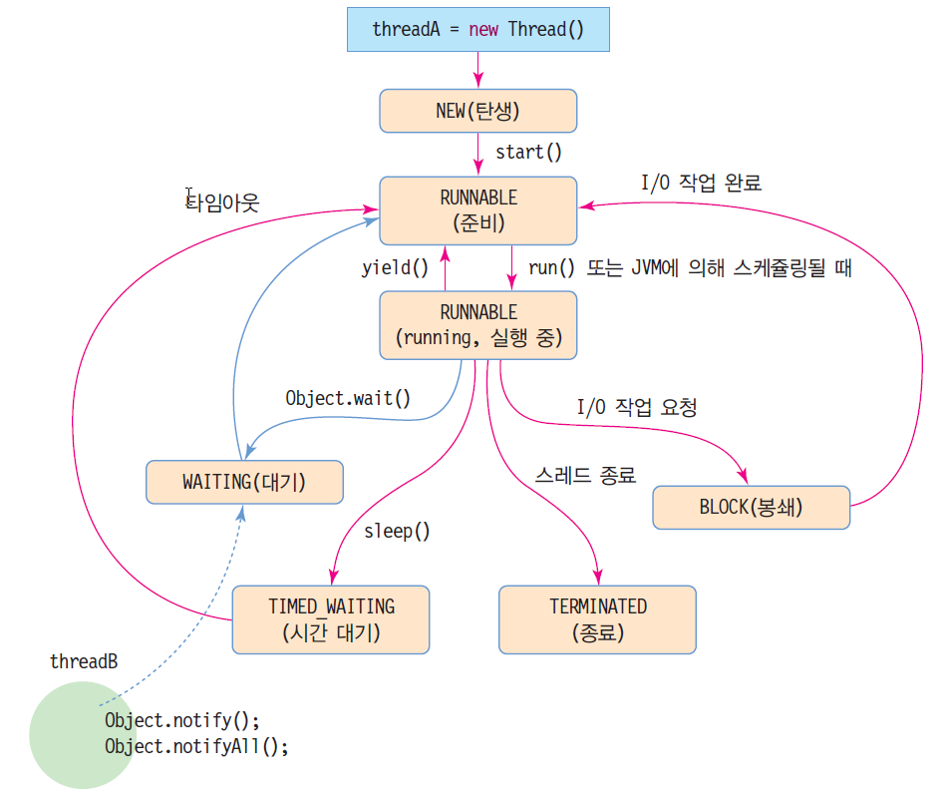Producer-Consumer Problem using Semaphore
Producer() {
put(item) {
P(empty); // for wait, Get an empty count, block if unavailable
P(mutex); // lock critical section: shared buffer
<<< critical section: Put item into shared buffer >>>
V(mutex); // unlock critical section
V(full); // for signal, increase number of full count
}
}
Consumer() {
take () {
P(full); // for wait, Get a full count, block if unavailable
P(mutex);
<<< critical section: Take item from shared buffer >>>
V(mutex);
V(empty); // for signal, increase number of empty count
return item;
}
}
Producer-Consumer Problem using Monitor
Producer() {
synchronized put(item) {
while(count >= buffer.length) { wait(); } // wait if buffer is full
count++
<<< critical section: Put iteminto shared buffer >>>
notifyAll(); // signal
}
}
Consumer() {
synchronized take () {
while(count <=0) { wait(); } // wait if buffer is empty
count- –
<<< critical section: Take itemfrom shared buffer >>>
notifyAll(); // signal
return item;
}
}


